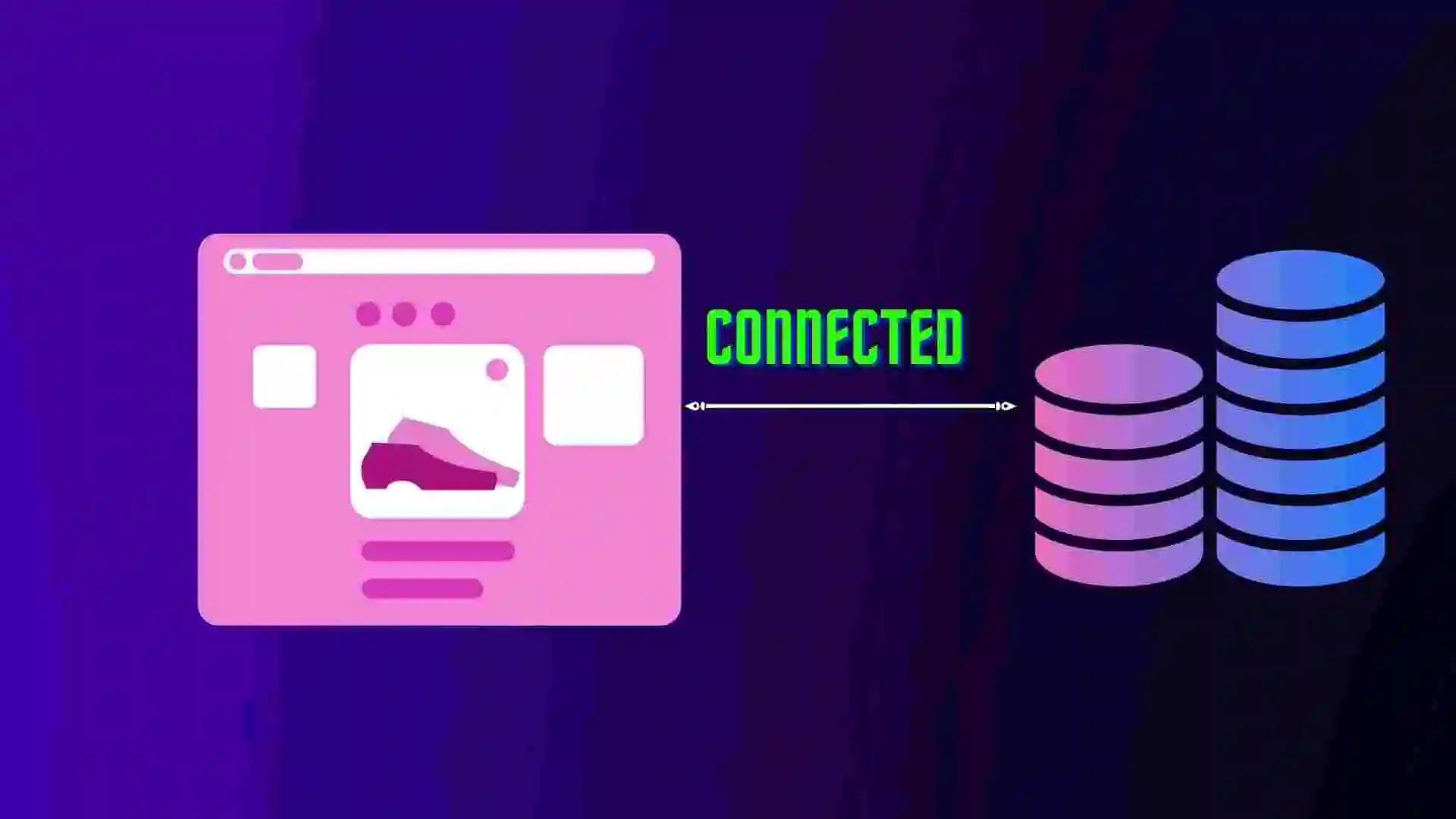Table of Contents
- Introduction to Website
- History of Website
- Types of Website
- How does Website Work
- Advantages
- Drawbacks
- FAQ
Introduction to Website
A website is a collection of related web pages accessed through a web browser. These web pages can contain various types of content such as text, images, videos, and interactive features such as forms or quizzes. Websites are hosted on web servers and can be accessed by anyone with an internet connection.
Websites can serve many purposes, including providing information, selling products or services, promoting a business or organization, or simply providing entertainment. They can range in complexity from simple static pages with essential data to complex dynamic sites with advanced functionality and interactive features.
Websites are a fundamental component of the internet, and they have revolutionized the way people communicate, learn, work, and conduct business.
History of Website
The history of the website can be traced back to the early days of the internet. In 1989, Tim Berners-Lee, a British computer scientist, invented the World Wide Web while working at CERN, the European Organization for Nuclear Research. The first website, which was created by Berners-Lee, went live in 1991.
The first websites were simple, text-based pages that provided information about a particular topic. Over time, as the internet became more popular and accessible, websites began to evolve and became more complex. By the mid-1990s, websites were starting to include images, videos, and other multimedia elements.
The development of HTML, or Hypertext Markup Language, in the mid-1990s, made it easier for people to create websites. The introduction of web browsers such as Netscape Navigator and Internet Explorer made it possible for users to view and interact with websites.
In the late 1990s and early 2000s, websites became more sophisticated and interactive, thanks to the development of technologies such as JavaScript, Cascading Style Sheets (CSS), and Ajax. Websites also became more commercialized, with the rise of e-commerce sites like Amazon and eBay.
In the 2010s, websites became increasingly mobile-friendly, as more and more people began accessing the internet on their smartphones and tablets. The rise of social media platforms like Facebook and Twitter also had a significant impact on the development of websites, as many sites began incorporating social media features.
Today, websites continue to evolve and become more sophisticated, with the advent of technologies such as artificial intelligence, virtual reality, and the Internet of Things (IoT). As the internet continues to grow and change, it’s likely that websites will continue to play a significant role in our daily lives.
Types of Website
Static and dynamic websites are two types of websites based on how the content is delivered to the user.
A) Static Website: A static website is a website that contains fixed content, which doesn’t change unless the web developer manually updates it. This type of website is created using HTML and CSS and does not contain any complex coding or scripting. Static websites are typically faster and easier to create, but they do not provide interactivity or real-time updates. Examples of static websites include brochure websites, landing pages, and portfolios.

B) Dynamic Website: A dynamic website is a website that contains dynamic content that is updated in real-time or on-demand, depending on user requests or database changes. Dynamic websites use more advanced technologies such as PHP, ASP, Python, and JavaScript to generate web pages on the fly. This type of website is capable of providing interactivity, personalized content, and advanced functionality such as e-commerce, social networking, and web applications. Examples of dynamic websites include online marketplaces, news portals, and social media sites.

In summary, static websites are simpler, quicker to develop, and don’t change content until manually updated, whereas dynamic websites use complex technologies to provide interactive and frequently updated content.
How does Website Work
A website is a collection of web pages that are hosted on a web server and made available over the internet for users to access. Here’s a simplified overview of how a website works:
- Creation: The website is created by web developers using programming languages such as HTML, CSS, and JavaScript.
- Hosting: The website files are uploaded to a web server, a computer connected to the internet, and capable of serving web pages.
- Domain Name: A domain name is registered and linked to the website’s IP address. This allows users to access the website using a memorable domain name instead of typing in the IP address.
- Browser Request: A user opens a web browser such as Chrome or Firefox and types in the website’s domain name or clicks on a link to the website.
- Web Server Response: The user’s browser sends a request to the web server, which retrieves the appropriate web page and sends it back to the user’s browser.
- Rendering: The user’s browser receives the web page and renders it, displaying the text, images, and other content.
- Interactivity: If the website contains interactive elements such as forms or buttons, the user can interact with them and send data back to the web server for processing.
- Dynamic content: If the website contains dynamic content that changes frequently, such as news articles or social media updates, the web server will retrieve the latest content and send it back to the user’s browser.
- Security: Websites may also use various security measures such as HTTPS and SSL/TLS encryption to protect user data and prevent unauthorized access.
This is just a brief overview of how a website works, and there are many more technical details involved in the process. However, this should give you a general understanding of the basic steps involved in accessing and using a website.
Advantages
Websites offer a number of advantages for businesses, organizations, and individuals, including:
- Increased visibility: It allows you to showcase your products, services, or ideas to a global audience. This increases your visibility and reaches, making it easier for potential customers or clients to find you.
- 24/7 availability: Unlike a physical store or office, a website is available 24/7, allowing visitors to access your content or make purchases at any time, from anywhere.
- Cost-effectiveness: It can be a cost-effective way to market your business, as it eliminates the need for expensive print ads, brochures, or billboards. You can also save on operational costs by using online tools to manage and automate various business processes.
- Credibility: A well-designed website can enhance your credibility and reputation, by showcasing your professionalism and expertise.
- Increased sales: With the ability to reach a wider audience, a website can help increase sales by providing a convenient and accessible platform for customers to make purchases or inquiries.
- Data collection and analysis: A website can also help you collect valuable data on customer behavior and preferences, which can be used to improve your products, services, or marketing strategies.
- Communication: It can serve as a communication hub, allowing you to connect with customers or clients through contact forms, live chat, social media integration, or other communication channels.
Overall, a website can be an essential tool for businesses, organizations, and individuals looking to establish a strong online presence and reach a wider audience.
Drawbacks
While websites offer numerous advantages, there are also some potential drawbacks to consider, including:
- Upfront costs: Developing and launching a website can be expensive, especially if you hire a professional web designer or developer to create a custom site for you.
- Ongoing maintenance: Once your website is up and running, it requires ongoing maintenance, updates, and security measures to keep it functioning properly and secure from cyber threats.
- Technical difficulties: It can experience technical difficulties such as downtime, slow loading speeds, or broken links, which can negatively impact user experience and search engine rankings.
- Competition: With millions of websites online, competition for attention and traffic can be intense, requiring significant effort and investment in SEO and digital marketing to stand out.
- Limited accessibility: While the internet has become increasingly accessible, not everyone has access to high-speed internet or the devices necessary to view websites optimally. This can limit your audience reach.
- Security risks: Websites can be vulnerable to security threats such as hacking, malware, or data breaches, which can result in financial loss, reputational damage, or legal liability.
- Lack of personalization: Websites can lack the personal touch of in-person interactions, and customers may feel disconnected or dissatisfied with the digital experience.
While these drawbacks are important to consider, they can often be mitigated or minimized with proper planning, management, and ongoing attention to website development and maintenance.
FAQ
A website is a collection of related web pages accessed through a web browser. These web pages can contain various types of content such as text, images, videos, and interactive features such as forms or quizzes. Websites are hosted on web servers and can be accessed by anyone with an internet connection.
A) Static Website: A static website is a website that contains fixed content, which doesn’t change unless the web developer manually updates it. This type of website is created using HTML and CSS and does not contain any complex coding or scripting. Static websites are typically faster and easier to create, but they do not provide interactivity or real-time updates. Examples of static websites include brochure websites, landing pages, and portfolios.
B) Dynamic Website: A dynamic website is a website that contains dynamic content that is updated in real-time or on-demand, depending on user requests or database changes. Dynamic websites use more advanced technologies such as PHP, ASP, Python, and JavaScript to generate web pages on the fly. This type of website is capable of providing interactivity, personalized content, and advanced functionality such as e-commerce, social networking, and web applications. Examples of dynamic websites include online marketplaces, news portals, and social media sites.




